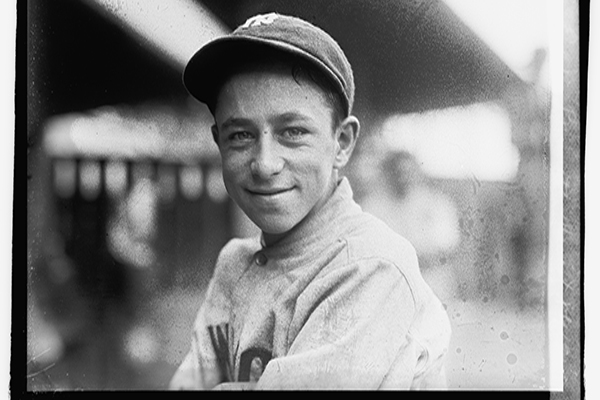
A significant piece of New York Yankees history lies in an unmarked grave in a Queens Catholic cemetery.
The remains of Eddie Bennett, former batboy for the 1927 Championship Bombers are interred at St. John’s Cemetery, Middle Village. He died penniless and alone in 1935 in his Manhattan apartment. His funeral and burial costs were paid for by Jacob Ruppert, owner of the Yankees, according to a press report from that day.
According to cemetery officials, the grave was owned by a Della McCabe, who lived on Manhattan’s West Side, but there have been no payments made on the care for the plot. No stone monument was ever erected. Burial followed a funeral Mass at St. Gregory the Great Church, Morningside Heights, Manhattan.
Bennett, who was born in Flatbush, had a tough childhood. He suffered a spinal injury in a baby carriage mishap, leaving him with a hunchback and stunting his growth. When he was 15, both his parents died in the 1918 flu epidemic.
A rabid baseball fan, he was hired as something of a good luck charm by the Chicago White Sox, only to lose his job after the 1919 “Black Sox” scandal. He assumed a similar role with the Brooklyn Robins, who won the National League pennant in 1920. But he was left behind as the Robins travelled to Cleveland for the World Series and then lost four straight games; some claimed Bennett had placed a hex on the team for not taking him on the road. He left his position.
The following year, he was hired by the Yankees, where would serve as batboy and mascot for the next 12 years. He was close to Babe Ruth and even to manager Miller Huggins, whom he would sit with in the dugout and discuss game situations. Some even refer to him as baseball’s first bench coach.
He would kneel on deck with the Bambino, and the two of them would put on a pre-game show in which the Babe would constantly throw the ball over the kid’s head as the fans roared in delight. Needless to say, political correctness would not allow such shenanigans today.
He was also known to round up hot dogs and glasses of bicarbonate soda for the Babe during games. Bennett remained with the Yankees until 1932 when he was hit by a cab on a Manhattan street. He turned to alcohol to ease his physical pain, eventually succumbing to alcoholism. He was found dead by his landlady in his apartment, where he died surrounded by photos of Yankees on the walls and piles of Yankee memorabilia, including old used game bats, piled on the floor.
Because he died in January during the off-season, no players attended the funeral. But members of the Yankees front office were Present. Charles Papio, a member of St. Bernadette’s Parish, Dyker Heights, recently dropped by The Tablet offices with clippings about Bennett.
He became interested in the grave site when he was visiting the graves of relatives at St. John’s Cemetery. A baseball enthusiast, who traces his own love for the game back to the Brooklyn Dodgers, Papio sees the forgotten batboy from Brooklyn as “part of the huge Yankees dynasty.”
Papio is also an ardent collector of baseball memorabilia who actually has seats from Ebbets Field in his possession, along with prized autographed photos of Mickey Mantle and Joe DiMaggio and former Brooklyn Dodgers. Papio smiles and wonders whatever happened to Eddie Bennett’s memorabilia.
During his Yankees’ career, Eddie Bennett became the most famous batboy in baseball history. While time has passed him by and his name is no longer recognized by many, there is no doubting Eddie Bennett’s place in baseball history.
Wouldn’t it be right for the Yankee organization to memorialize the name of someone who was a valuable member of the organization? Since the club paid for his funeral, wouldn’t it be even more generous if the Yankees sponsored a marker for the gravesite?
In this American League East championship year, the Yankees could step up to the plate and show themselves to be the champions that they are.
Wilkinson was the editor of the paper for 33 years.
